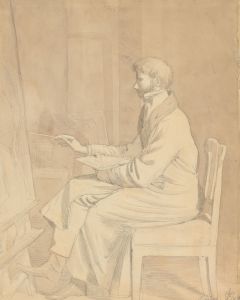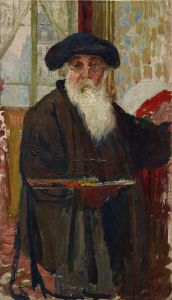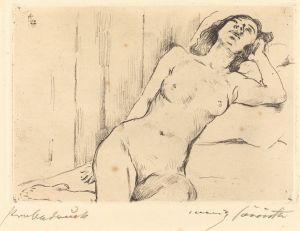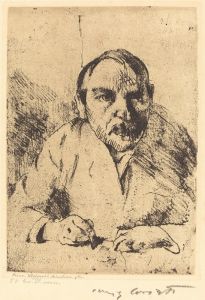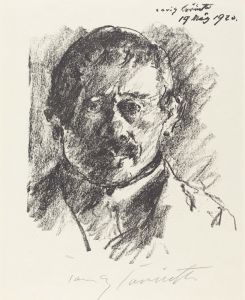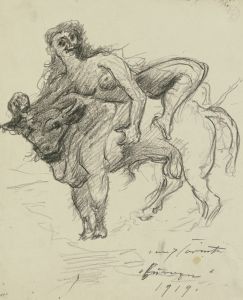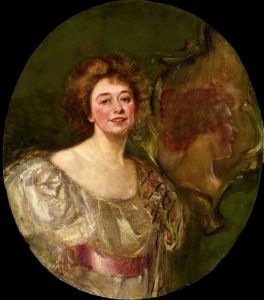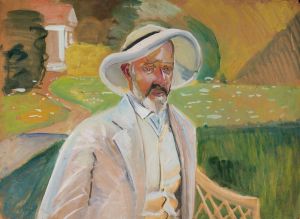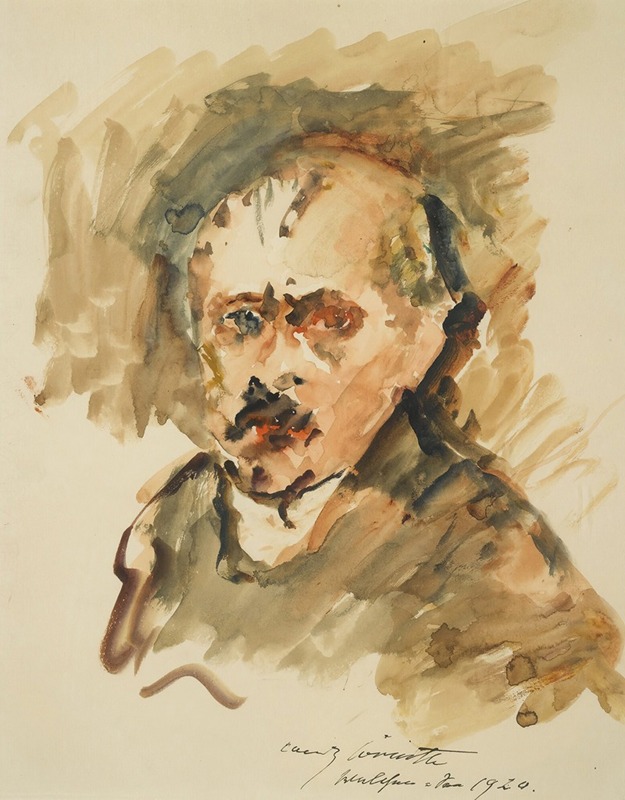
Selbstbildnis Mit Schnurrbart
A hand-painted replica of Lovis Corinth’s masterpiece Selbstbildnis Mit Schnurrbart, meticulously crafted by professional artists to capture the true essence of the original. Each piece is created with museum-quality canvas and rare mineral pigments, carefully painted by experienced artists with delicate brushstrokes and rich, layered colors to perfectly recreate the texture of the original artwork. Unlike machine-printed reproductions, this hand-painted version brings the painting to life, infused with the artist’s emotions and skill in every stroke. Whether for personal collection or home decoration, it instantly elevates the artistic atmosphere of any space.
Lovis Corinth's Selbstbildnis mit Schnurrbart (Self-Portrait with Mustache) is a self-portrait created by the German painter and printmaker Lovis Corinth. Corinth, a prominent figure in the transition from Impressionism to Expressionism, was known for his dynamic and emotive style, which often combined realism with bold, expressive brushwork. This particular self-portrait is one of many that Corinth painted throughout his career, as he frequently used self-portraiture to explore themes of identity, aging, and artistic expression.
Selbstbildnis mit Schnurrbart is believed to have been painted in 1896, during Corinth's early career. At this time, he was living in Munich, where he studied at the Academy of Fine Arts and later became associated with the Munich Secession, an art movement that sought to break away from academic traditions. The painting reflects Corinth's technical skill and his interest in capturing psychological depth. The artist portrays himself with a direct, confident gaze, emphasizing his mustache as a defining feature of his appearance. The work is characterized by its detailed rendering of facial features and the subtle interplay of light and shadow, which give the portrait a sense of immediacy and vitality.
This self-portrait is significant not only as a representation of Corinth's early style but also as a document of his personal and professional identity during a formative period in his life. It predates the dramatic shift in his artistic approach that occurred after he suffered a stroke in 1911, which left him partially paralyzed. Following his recovery, Corinth's work became more expressive and emotionally charged, reflecting his changed perspective on life and art.
The painting is housed in the collection of the Städtische Galerie im Lenbachhaus in Munich, Germany. The Lenbachhaus is renowned for its extensive collection of works by members of the Blue Rider (Der Blaue Reiter) group, as well as other important figures in German art, including Corinth. Selbstbildnis mit Schnurrbart remains an important example of Corinth's early work and his ongoing exploration of self-representation.
This self-portrait is a testament to Corinth's technical mastery and his ability to convey both physical likeness and emotional depth. It offers viewers a glimpse into the artist's personality and his evolving artistic vision during a pivotal moment in his career.





